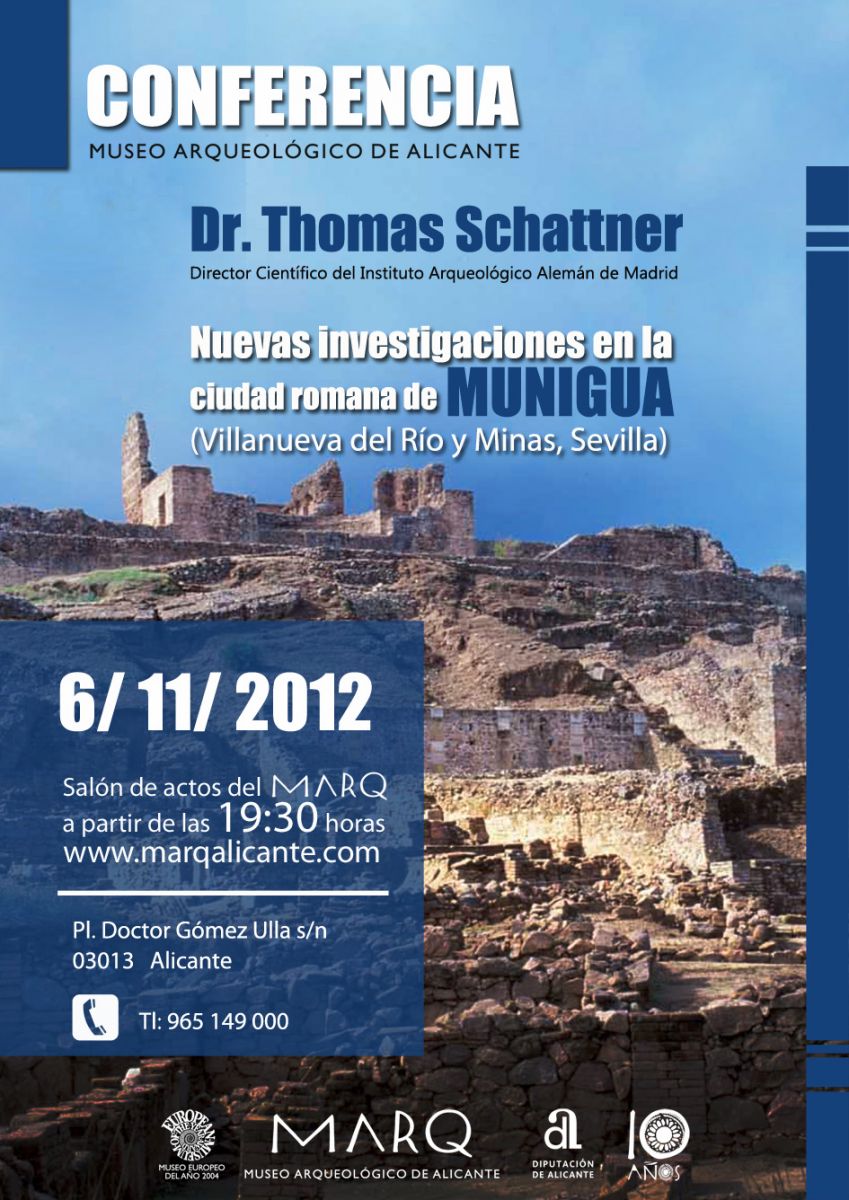
Next 6th of November conference at MARQ, given by Thomas Schattner, Scientific Director of the German Archaeological Institute. From 19:30 h.
MUNIGUA
Municipium Flavium Muniguense
Munigua is located about 50 kms NE of Seville in the middle of the Sierra Morena. The landscape is characterised by cork oaks and holm oaks and is remarkable for its natural beauty. It is a small Roman city with an imposing Sanctuary of Terraces, Temple of Podium, other minor sanctuaries, a two-storey portico, a Forum, Thermae, urban Villae and a necropolis. The site has been investigated and excavated by archaeologists from the German Archaeological Institute in Madrid since the 1950s.
Archaeological finds document settlement of the site over a period of about 1,000 years. Hardly any finds are known from the pre-Roman phase (5th to 1st century BC), and to date no architecture can be attributed to it. This began to appear from the 1st century BC onwards. It is a settlement located on the municipal hillside, whose existence is explained by mining, an activity documented by many ovens on the hillside. The presence of the Romans is evidenced by a hospitality treatise dating from the time of Augustus. From the 70s AD onwards, we can see the beginning of a phase of intense construction activity which culminated in the early 2nd century AD with the construction of all the buildings mentioned above. These constructions meant the abandonment of the furnaces on the hillside, and mining activity moved to the outskirts of the municipality or to the Gudalquivir Valley itself. From the 3rd century AD onwards, a phase of decline began, as in the whole Roman Empire, which in Munigua was marked by an earthquake that destroyed a large part of the buildings. From this point onwards we do not see the construction of new buildings, only the repair of existing ones, which is interpreted as a sign of the gradual abandonment of Munigua, which took place around the 5th/6th century AD. The site was never inhabited again, which explains why the monuments are so well preserved.
In recent years, research has focused on the economic basis of the town, which consists mainly of mining, but also of agriculture.
